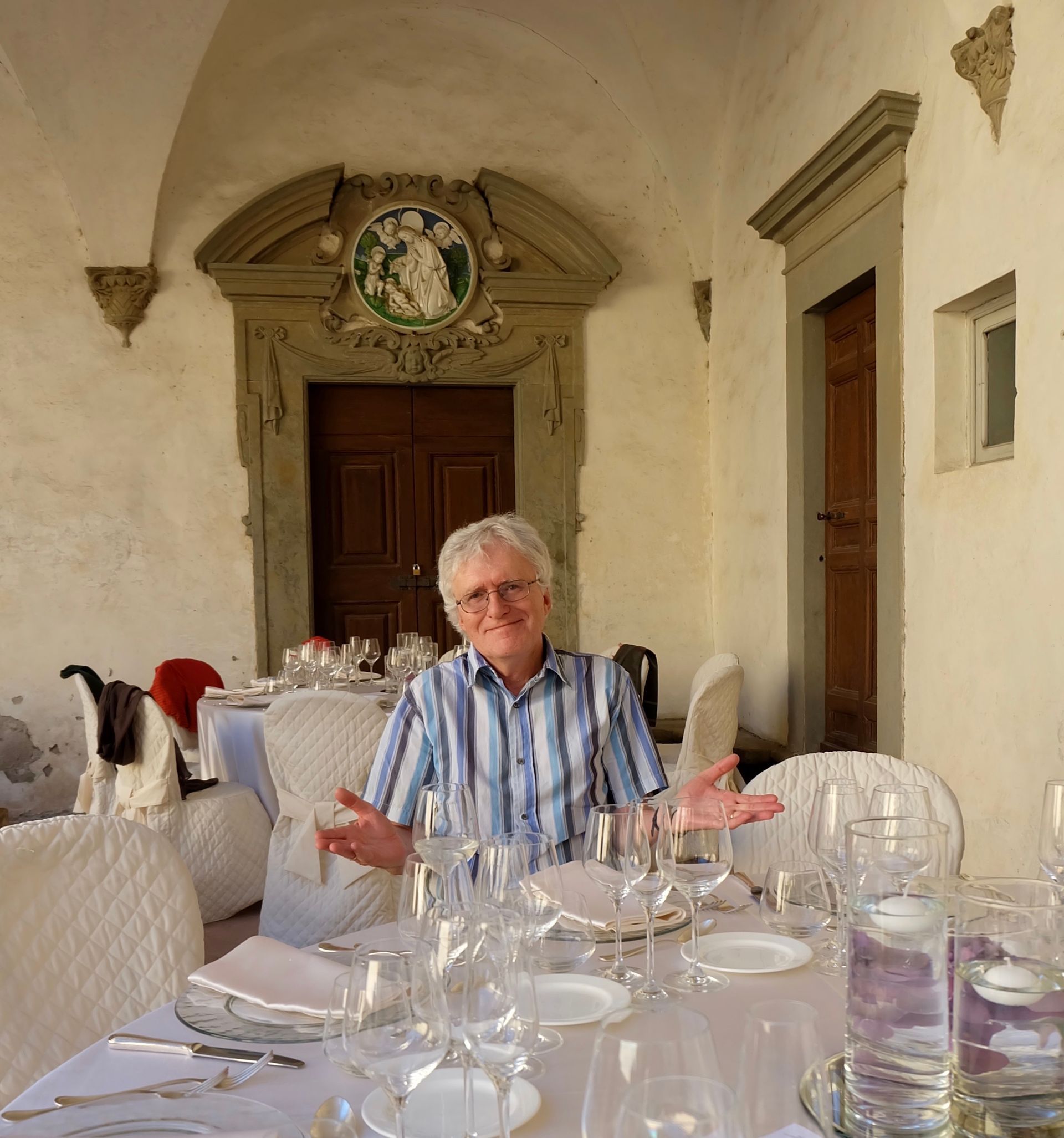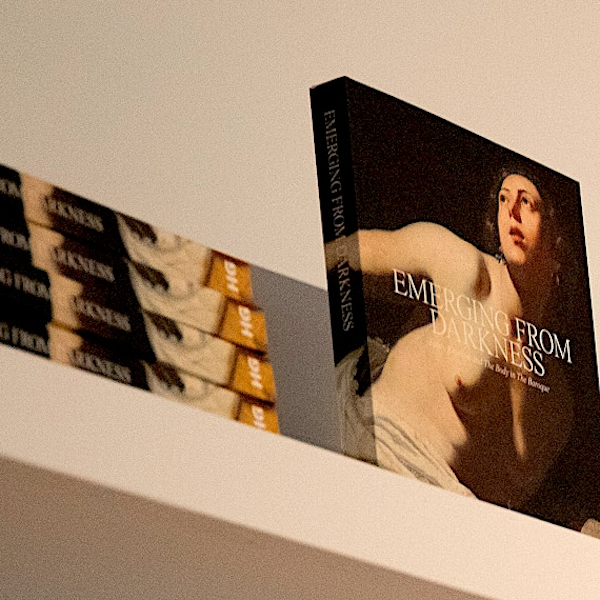Alice’s Adventures in Fascist Italy
Caterina Sinibaldi Universities of Warwick and Bath (U.K.)
Front and back cover of Lewis Carroll, Alice nel paese delle meraviglie , transl. by Mario Benzi (1935). Copyright Biblioteca Nazionale Centrale, Florence.
When I mention the hostility faced by Lewis Carroll’s Alice in Wonderland during the Italian Fascist regime (1925-1943), people usually react with surprise. How could such an innocent, harmless tale be perceived as a ‘moral threat’ by Fascist authorities? Surely they must have been too concerned with silencing political opponents and maintaining their grip on the country to care about a naïve children’s story.
Scholars who have been studying Carroll’s masterpiece from a variety of disciplinary perspectives (including mathematics, philosophy, and literary studies) have drawn attention to the complexity of Alice , whilst also highlighting its innovatory aspects. Not only did the novel operate a remarkable shift away from the didacticism that had dominated children’s literature since its origins, but also, in portraying such an unconventional heroine, it celebrated freedom of thought in books for children. If the revolutionary potential of Alice is little known to the wide audience, this is because books for children are usually perceived as educational and/or entertaining, while their ideological dimension remains largely overlooked.
Most critics agree in recognizing Alice as the first example of modern children’s literature, that is, literature written to charm and amuse child readers, rather than merely indoctrinate them. At the time of its publication, Alice strongly diverged from the tradition of didacticism which informed the mainstream of English children’s literature; Carroll had created a highly unconventional female protagonist, who questioned authority and displayed great intellectual curiosity. Furthermore, as a world constructed through nonsense and parody of social norms, Wonderland revealed the arbitrary nature of social conventions, first and foremost, language.
However, the reasons behind Fascism’s hostility towards Alice are not immediately obvious.
While the central role played by censorship and propaganda in Fascist regimes is commonly known and accepted, the impact such ‘twin weapons’ had on children’s literature has been explored very little to date. In particular, while the political indoctrination of children is well-known and studied, the ways in which Fascism dealt with foreign children’s literature has received almost no scholarly attention. This is surprising if we consider that the translation of children’s books and journals was a flourishing business during Fascism, and that the regime had issued specific measures to limit and contrast such foreign influences on Italian children. My study of the unfavourable reception of Alice in the context of Italian Fascism has two main objectives: to reveal the political implications of writing and translating children’s literature, and also to bring attention to the little-studied phenomenon of translating books for children during Italy’s Fascist dictatorship.
Going back to our main question, why was Carroll’s Alice in Wonderland so strongly condemned by Fascist institutions?
In October 1938 Fascist intellectuals and educators gathered in Bologna for a unique event in Italian history thus far: a National Conference on Youth and Children’s Literature. The conference, which aimed to regenerate Italian children’s literature according to the values of Fascism, also had important symbolic significance as it revealed the regime’s influence on every aspect of Italian culture. In this context, a session was devoted to the translation of children’s literature, a widespread phenomenon that threatened the totalitarian ambitions of the regime. The list of foreign books for children that were considered unsuitable for Italian young readers included classic works such as Alcott’s Mary Poppins , Kipling’s The Jungle Book and Michaelis’ Bibi .
Intellectual Nazareno Padellaro had particularly harsh words for Alice , which he claimed to be pervaded by a ‘Atmosfera da incubo che […] finisce per deformare quel senso plastico delle cose e quindi quel giudizio obiettivo di esse che è il dono innato di tutti gli Italiani […] in cui gli oggetti, più ancora delle persone sono sotto l’azione del cloroformio. Le bestie non parlano con arguzia come nelle fiabe. Nessun personaggio riesce a recitare una poesia […] Se lo spirito anglosassone ama simili ebbrezze, non si comprende perché si dovrebbe ad esse iniziare il nostro fanciullo, che per disposizione di spirito piega all’obiettivo tutto quello che tenta di rarefarsi nel sogno. (‘Nightmarish atmosphere […] which ends up distorting that concrete understanding of things and therefore that natural objectiveness, innate faculty of all Italians. […] where objects, even more than people, seem to be under the effects of chloroform. Animals do not talk wisely as in fairy tales; nobody succeeds in reciting a poem. If the Anglo-Saxon spirit loves a similar state of inebriation, one does not understand why we should propose it to our children, whose national spirit bends to rationality anything that rarefies into dreams’). [i]
Padellaro’s criticism reveals how the reasons behind the Fascist disapproval of Alice lay in its foreignness, as well as in its being a work of ‘dangerously imaginative’ and unrealistic fantasy. Both these elements were blamed for their power to corrupt and intoxicate young Italian minds. Moreover, the other aspects mentioned above that made Alice revolutionary at the time of its publication, also made it utterly incompatible with the notion of ‘Fascist literature for Fascist children’ promoted by the conference participants.
Following the conference, a series of censorship measures were issued against children’s periodicals that published foreign (and especially American) comics. Compared to that of magazines, the censorship of books for children was less overt and was manifested in subtle ways; despite not being withdrawn from the market, none of the books mentioned at the Bologna Conference was retranslated between 1938 and the fall of the regime. Besides being obviously excluded from the school curricula, these books also received negative reviews in the most authoritative manuals on the children’s literature of the time.
However, when the Conference took place, a number of translations of Alice were already circulating, two of which had been published prior to Fascism (one in 1872 by Teodorico Pietrocola-Rossetti, the other in 1908 by Emma Cagli). During the Fascist rule, two further translations came out in 1931 and 1935, by Maria Giuseppina Rinaudo and Mario Benzi respectively.
When examining the two translations produced during the 1930s as part of my PhD thesis, I was interested in addressing a number of issues: first of all, was the hostility towards Alice already visible in the translations that were carried out before the Bologna Conference (1938)? Second, if so, why was Carroll’s novel retranslated twice?
The short answer to the latter question would be that, despite Mussolini’s totalitarian ambitions, Italy remained an open-market economy, where publishers had to compete on the international scene. In particular, since at the time the majority of Italians could read French, Italian publishers were eager to provide translations of those books that already circulated in a French version. By the time Mussolini came to power, Alice was already regarded as an international classic and translated into most living languages. Therefore we can assume that the multiple Italian translations of Alice were largely motivated by financial considerations. In this context, translators had to negotiate between numerous and often conflicting demands: while, on the one hand, they had to comply with professional norms, and produce a satisfying translation, on the other, they were likely avoid all those topics that could have been perceived by the regime as controversial or offensive.
With regards to the former question, I carried out a textual and contextual analysis of the two translations, with the purposes of a) identifying the strategies employed by translators when dealing with a text that did not find an equivalent in Italian children’s literature; b) assessing the extent and the degree of Fascist influence; c) highlighting the differences between the two translations, which were published at very different phases of the regime.
For the purposes of this post, I will offer some examples from the two translations published in the 1930s. This will show how the Italian translators, although working within a common cultural and ideological framework, adopted different strategies that produced different outcomes.
At a first glance, both translations appear as fairly literal: the original is not abridged, and both versions attempt to reproduce the communicative clues of the source text. However, through small, almost imperceptible changes, the character of Alice and the ultimate value of her adventures in Wonderland are completely distorted.
How is this achieved?
The most significant changes occur at narratorial level, that is to say, in the relationship between the character and narrator. According to Barbara Wall, one of the most innovatory aspects of Alice lies in the fact that Carroll was writing for a real child and about a real child. [ii] As a consequence of this, child readers are never patronised or lectured by the narrator, who is keen on amusing them and stimulating their imagination.
While adopting different narratorial strategies, both Benzi and Rinaudo distort the original relationship between narrator and protagonist. As a result, the brave and intellectually curious protagonist of Carroll’s novel is replaced with an emotional, confused little girl, lost in a terrifying Wonderland.
In Rinaudo’s translation we can find several instances where the narrator refers to Alice as ‘la fanciulletta’ (‘the little girl’) or ‘la bimba’ (‘the girl’), where in the original we find a more neutral ‘Alice’, only very rarely replaced by ‘the child’. On the one hand, we should consider that in Italian , reiteration by means of repetition is usually avoided for stylistic reasons. On the other hand, we cannot overlook the patronizing effect of the diminutives used by Rinaudo, which emphasise the adult-child asymmetry so carefully avoided by the original narrator. A similar naming strategy is applied to other characters; for instances, the cat Dina becomes ‘la gattina’, [iii] (‘the kitty’) ‘pig’ is translated as ‘maialino’ [iv] (‘piggy’), and so on.
The translation produced by Benzi also gives evidence of a change in narratorial stance, this time expressed mainly through the manipulation of speech acts. We can find a clear example of this at the beginning of the novel. The original: ‘and what is the use of a book’ thought Alice ‘without pictures or conversations?’ [v] is translated by Benzi as: ‘e Alice non poteva capire che gusto ci sia a leggere un libro senza dialoghi né illustrazioni’ [vi] (‘Alice could not understand how one can enjoy reading a book without dialogues or illustrations’). The change is particularly significant, since it contradicts what Alice is saying about the importance of dialogues in books. Similarly, in other instances, Alice’s think-aloud processes, which in the original break the monotony of a single narrative perspective, are replaced with more traditional narrative forms, as in the following example, where ‘“which certainly was not there before” said Alice’ [vii] is translated as ‘Alice n’era certa’ [viii] (Alice was sure of it). As a result of the shift from direct to indirect speech when reporting Alice’s thoughts, the translation by Benzi restores a conventional, omniscient narrator, who silences the voice of the child protagonist.
In addition, both translations show several instances of ‘optional explicitation’, [ix] where Italian translators have explained or uncovered layers of meaning that were intentionally obscure or implicit in the original. The didactic approach adopted by Benzi and Rinaudo significantly differs from the original narratorial perspective, especially if we consider that Carroll’s novel was not fully comprehensible to its original readers, nor was it meant to be. We could argue that the fascination exerted by Alice lies precisely in its strange mixture of familiar and unfamiliar, and in the disturbing transformation of the familiar into the uncanny. This last aspect is especially evident in the parody of moral didactic poems and nursery rhymes, where the incoherent language of nonsense was aimed at creating an echo of familiarity. By offering ‘alternative’ versions of well-known poems that children were required to learn at school, Carroll also offers a parody of official education, since the moral content of the poems is lost in nonsense .
In the Italian versions, as a result of the literal translation of poems and cultural references, the double level of meaning is lost, together with the comical/parodical effect. A clear example of this can be found in the parody of the opening line of one of the best-known English nursery rhymes, ‘Twinkle Twinkle Little Star’, turned by Carroll into: ‘Twinkle, twinkle, little bat! How I wonder what you’re at!’. [x] When the Hatter asks the protagonist whether she knows the song, Alice replies ‘I’ve heard something like it’. [xi] Benzi renders this passage as:
“Vola, vola, pipistrello! (Fly, fly, bat)
Dio sa che cosa fai!” (God knows what you are doing)
La conosci questa canzonetta? (Do you know this little song?)
Mi pare d’aver già udito qualcosa di simile (I might have heard something similar) [xii]
While in Rinaudo’s translation we read instead:
“O pipistrello, scintilla, scintilla (Twinkle, twinkle, bat)
Come vorrei sapere ciò che tu fai!” (I would like to know what you are doing)
– Conosci forse questa canzone? (Maybe you know this song?)
– Ho udito qualcosa di simile – osservò Alice (- I have heard something similar – said Alice) [xiii]
We can see how the literal translation of the original poems and nursery rhymes also breaks the identification between the reader and the protagonist, who claims to have heard ‘something like that’ before.
Finally, it is worth considering how both translators dealt with the ending of Alice . The confusion between dream and reality, which plays a key role at the beginning of the story, is eliminated in the final pages, where the novel is clearly inscribed in the communicative frame of a dream. [xiv] As argued by Schwab, ‘The fiction of a completely alien and nonsensical world is thus mediated by a familiar framing perspective’, [xv] which seems to restore a more conventional narrative mode. In both the Italian versions, the initial and the final transitions between dream and reality are translated quite literally, maintaining the ambiguity of the original. However, the two translations show a significant difference in the closing paragraph where, following a shift in focalization, Alice’s sister is imagining her as a grown-up woman.
We read in the original:
… and how she would gather about her other little children, and make their eyes bright and eager with many a strange tale, perhaps even with the dream of Wonderland of long ago. [xvi]
Which Rinaudo renders as:
E la vide raccogliere intorno a sé altri bambini, a cui farebbe scintillare gli occhi raccontando curiose novelle, forse anche il sogno del Paese delle Meraviglie di tanti anni addietro. (And she saw her gathering about her other children, and make their eyes bright by telling them curious tales, perhaps even the dream of Wonderland of many years ago) [xvii]
While Benzi translates:
E la vide donna matura in mezzo a bambini tutti intenti, con occhi pieni di meraviglia, perché lei, la mamma, raccontava una storia, forse quella del suo sogno straordinario di tanti anni dianzi, una mamma sempre memore della sua infanzia…(And she saw her as a grown up woman, surrounded by children intently listening to her with their eyes full of wonder, because her, their mother, was telling them a story, perhaps that of her extraordinary dream of many years ago, a mother who still remembers her own childhood) [xviii]
The ambiguity of the original ending with regard to the relationship between Alice and the ‘other little children’ is resolved differently by the Italian translators. Rinaudo portrays Alice as a story-teller rather than a mother, thus situating the heroine in a very different position. Such a scenario recalls the words of the protagonist who, in realizing the exceptional nature of her adventure, says: ‘There ought to be a book written about me, that there ought! And when I grow up, I’ll write one’. [xix]
Benzi’s version leads to the opposite interpretation, where the protagonist is portrayed as a mother surrounded by her children. The ideological connotations of such a choice cannot be overlooked, especially if we consider that none of the previous Italian translations had presented Alice as a mother. Fascist ideology promoted a strong cult of motherhood, which permeated both the rhetorical discourses and legislative policies of the regime.
By projecting an image of the protagonist as a future mother, we could hypothesise that the translator is trying to restore a more acceptable gender role for Alice. This could also be the result of a requirement on the part of the publisher, concerned about making the text acceptable in the eyes of the regime, at a time when the official campaign against translations was particularly intense.
In this respect, we can see how the novel’s ending exemplifies the differences between the two translations. Benzi’s text was especially influenced by the totalitarian ambitions of the regime, which had become more visible in the second half of the 1930s. On the other hand, by portraying the female protagonist in an authorial position, Rinaudo seems to be less influenced by the regime’s rhetoric and ideological requirements. The difference could also be motivated by the gender of the translators, and by Rinaudo’s own career as a writer and a translator, but the mystery surrounding her identity makes the hypothesis difficult to prove. [xx]
The two Italian translators also had a very different ‘professional status’ and reputation with readers. While Mario Benzi was an incredibly prolific translator during the years of Fascism, who had translated, between 1929 and 1941, more than 90 books from English, German and French, Giuseppina Rinaudo’s name was unknown to readers when her translation of Alice came out in 1931. This obviously generated different expectations, both from readers and from cultural authorities. Valerio Ferme has pointed out how occasional translators differ from professional translators, [xxi] in the way the former are not as dependent on patronage as the latter, therefore they can afford to be more experimental and challenge existing norms. Although Rinaudo’s translation is not particularly creative, especially if compared to the translations published before Fascism, her version does not comply with the notion of ‘Fascist children’s literature’ outlined at the Bologna Conference. On the other hand, Benzi’s translation, although avoiding any clear reference to Fascism, shows a greater degree of ideological affinity with the regime.
In conclusion, it is interesting to point out how, by turning fine parody and sophisticated nonsense into ravings and ramblings, the Italian translations of Alice seem to validate the Fascist claim that Carroll’s novel could not possibly appeal to the ‘rational’ and ‘stable’ Italian mind. At the same time, the very fact that Alice was retranslated twice during Fascism is significant in itself and sheds light on the mechanisms of cultural production during the regime. After the Second World War and fall of Mussolini, Italy experienced a boom in the number of translations of Alice that were published, and Italian translators have been rising to the challenge of retranslating Carroll’s masterpiece until the present day.
(This is an excerpt from one of the chapters of my PhD thesis, entitled “Between Censorship and Propaganda: The Translation and Rewriting of Children’s Literature during Fascism”. (The University of Warwick, November 2012)
Works Cited
Blum-Kulka, Shoshana, ‘Shifts of cohesion and coherence in translation’, in Interlingual and Intercultural Communication, ed. by J. House and S. Blum-Kulka (Tubingen, Gunter Narr Verlag, 1986).
Carroll , Lewis , The Annotated Alice ed. by Martin Gardner (London: Penguin, 2001).
———, Alice nel paese delle meraviglie, trans. by Maria G. Rinaudo (Florence: Bompiani, 1931).
———, Alice nel paese delle meraviglie, trans. by Mario Benzi (Florence: Bemporad, 1935).
Ferme, Valerio, Tradurre è tradire . La traduzione come sovversione culturale sotto il fascismo (Ravenna: Longo, 2002).
Padellaro, Nazareno, ‘Traduzioni e riduzioni di libri per fanciulli’, in Convegno nazionale per la letteratura infantile e giovanile (Bologna: Ente nazionale per le biblioteche popolari e scolastiche, 1938), pp. 239- 58.
Schwab, Gabriele, ‘Nonsense and Metacommunication: Reflections on Lewis Carroll’ in The Play of the Self , ed. by Ronald Bague and Mihai I. Spariosu (Albany: State University of New York Press, 1994).
Wall, Barbara, The Narrator’s Voice: the Dilemma of Children’s Fiction (London: Macmillan, 1991).
[i] Nazareno Padellaro, ‘Traduzioni e riduzioni di libri per fanciulli’, in Convegno nazionale per la letteratura infantile e giovanile (Bologna: Ente nazionale per le biblioteche popolari e scolastiche, 1938), pp. 239- 58 (p. 40-1). All transaltions are mine, unless otherwise indicated.
[ii] Barbara Wall, The Narrator’s Voice: the Dilemma of Children’s Fiction (London: Macmillan, 1991), p. 97.
[iii] Lewis Carroll, Alice nel paese delle meraviglie , trans. by Maria Giuseppina Rinaudo (Florence: Bompiani, 1931), p. 40.
[iv] Ibid., p. 39.
[v] Lewis Carroll, The Annotated Alice , ed. by Martin Gardner (London: Penguin, 2001), p. 11.
[vi] Lewis Carroll, Alice , Alice nel paese delle meraviglie , trans. by Mario Benzi (Florence: Bemporad, 1935), p. 7.
[vii] Carroll, The Annotated , p. 16.
[viii] Carroll, Alice , trans. by Benzi, p. 13.
[ix] Shoshana Blum-Kulka, ‘Shifts of cohesion and coherence in translation’, in Interlingual and Intercultural Communication, ed. by J. House and S. Blum-Kulka (Tubingen, Gunter Narr Verlag, 1986), pp. 17-35
[x] Carroll, The Annotated , p. 77.
[xi] Ibid.
[xii] Carroll, Alice , trans. by Benzi, p. 51.
[xiii] Carroll, Alice , trans. by Rinaudo, p. 86.
[xiv] Gabriele Schwab, ‘Nonsense and Metacommunication: Reflections on Lewis Carroll’ in The Play of the Self , ed. by Ronald Bague and Mihai I. Spariosu (Albany: State University of New York Press, 1994), pp. 157-79.
[xv] Ibid., p. 160.
[xvi] Carroll, The Annotated , p. 132.
[xvii] Carroll, Alice , trans. by Rinaudo, p. 94.
[xviii] Carroll, Alice , trans. by Benzi, p. 153.
[xix] Carroll, The Annotated , p. 40.
[xx] No information was found on Maria Giuseppina Rinaudo. However, if we hypothesize that Rinaudo is a simplification of the name ‘Reynaudo’, this leads us to consider the historical figure of Giacomo Paolo Reynaudo (1888-1956). A Tuscan writer and journalist, Reynaudo had become, in 1925, director of Bemporad publishing, that would publish Alice in 1931. Maria Reynaudo, wife of Giacomo Paolo, also published a book, L’uccellino dei sogni e altre storie per bambini (1946), and appears as the author of various translations of children’s stories by John Ruskin and Oscar Wilde. We might therefore speculate that the translation was made by Maria Reynaudo, or by Giacomo Paolo Reynaudo himself, under a female pseudonym, given that it was not uncommon for the directors of publishing houses to translate books anonymously or under fictitious names.
[xxi] Valerio Ferme distinguishes between ‘traduttori per professione’ and ‘traduttori per passione’ in Tradurre è tradire . La traduzione come sovversione culturale sotto il fascismo (Ravenna: Longo, 2002), pp. 55-6.









